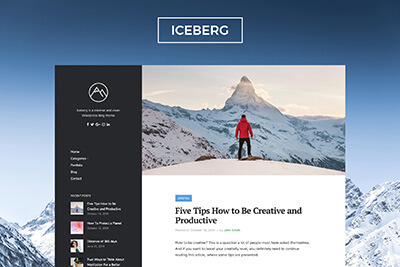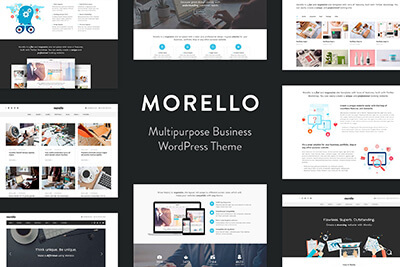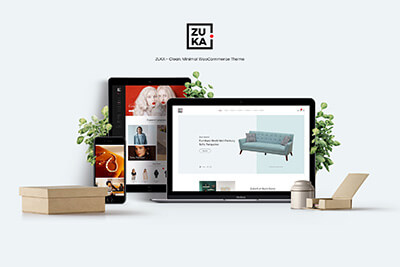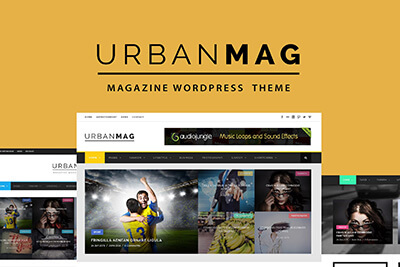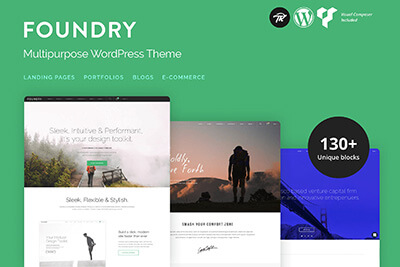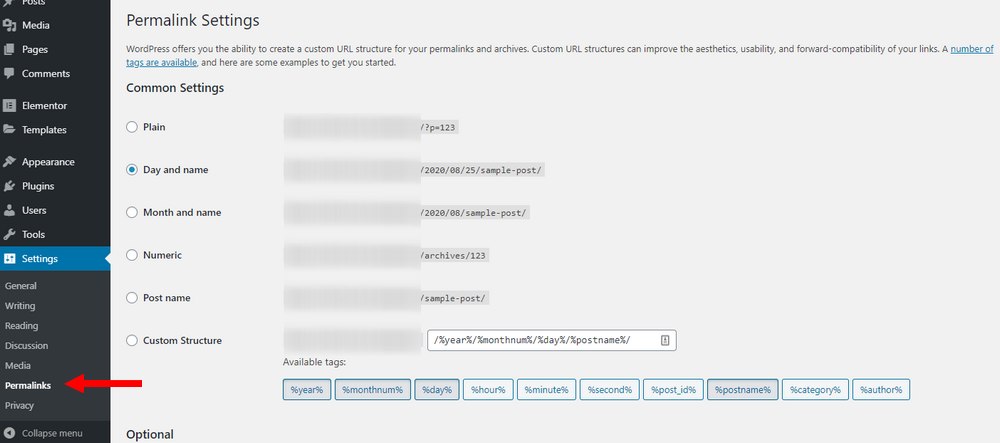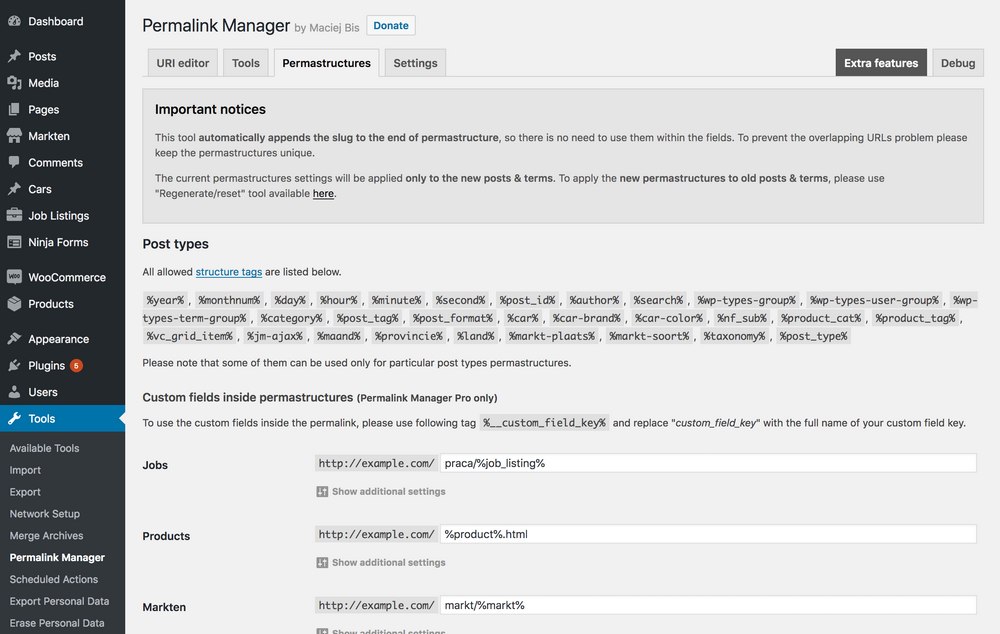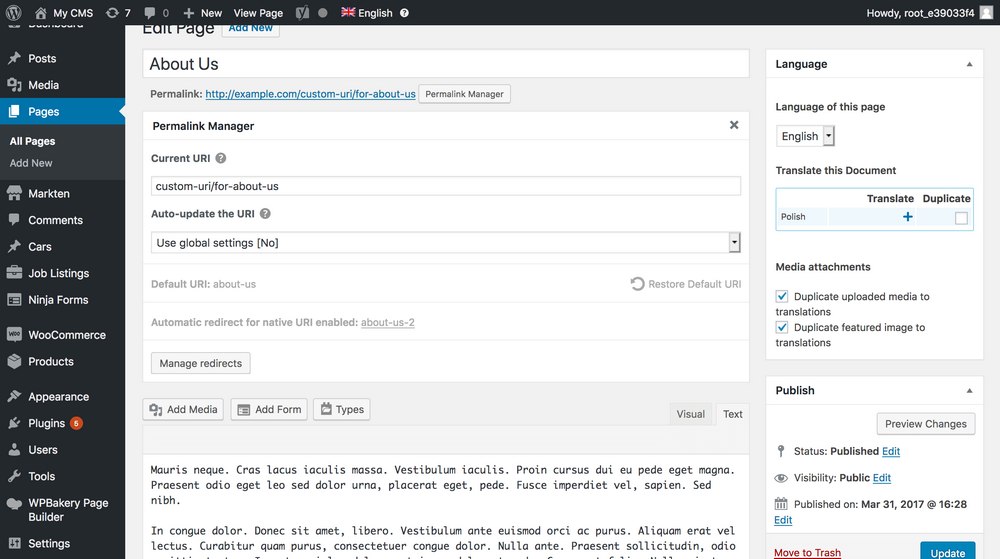How To Edit & Change Permalink In WordPress
What is a permalink? Are they important for SEO? Which permalink should you use in WordPress? In this guide, we’re going to answer all these questions and give you a few tips on using WordPress permalinks.
Permalinks are one of the most crucial elements of every website. However, many beginning WordPress users often overlook this feature almost completely when making new websites. Mainly because WordPress does a poor job of educating the user of the importance of permalinks.
We wanted to fix the mistake WordPress made by giving you a more detailed explanation of permalinks. Keep reading to find out what these permalinks really are.
One Subscription: Everything You Need to Build a Website
Get everything you need to build your next website with one simple subscription. From $16 per month, get unlimited access to nearly 2 million WordPress themes, web templates, fonts, graphics, and photos.
What Is a Permalink in WordPress?
A Permalink is the URL that you create for a web page. Permalink is short for permanent link. And as the name suggests, the permalink you create for each page should be permanent.
WordPress uses a permalink structuring system to automatically generate the URLs for every page or post you create.
Whenever you create a fresh WordPress installation, one of the first things you should do is changing the permalink structure to your preferred method.
You only get one shot at this. Because if you wanted to change the permalink structure at a later time, it will affect your entire website. You’ll lose traffic, Google rankings, and it’ll be a complete disaster.
Permalink vs Slug
A permalink is made up of two components— the permanent part of the URL and the slug.
The slug is the customizable part of the URL. That small text area at the end of the URL. It’s usually where the name of your blog post or page appears.
The slug can be customized to your preference. You can even edit the slug for each page or post you create. However, you can’t change the permanent part of the URL, which you select from WordPress settings.
How It Affects Your Website and SEO
When you visit a blog or a website, you’ll notice that they use different styles of URL systems.
For example, the BBC website uses a short permalink structure mixed with a slug of words and numbers. But CNN uses a very detailed URL system that categorizes each post under the published date, category of the post, and then a slug for the article.
For a big news website like CNN, adding the date to the permalink makes a huge difference in structuring their content. But it may not work the same for all websites.
If you have a blog that covers evergreen content like guides and tutorials, it’s better to use shorter and more descriptive URLs without confusing dates and numbers.
Also, it gives you an opportunity to optimize the page URL with a keyword. So that it has a higher chance at ranking well on Google.
Different Styles of Permalinks
WordPress allows you to choose from 6 permalink structures to choose from.
Plain
https://mywebsite.com/?p=111
Plain the default permalink structure used by WordPress. If you don’t change any setting related to permalinks, WordPress will continue to use this structure for your URLs. It creates URLs based on the number of posts or pages published on your website.
Day and Name
https://mywebsite.com/2020-08-30/post-title-slug/
This structure adds the article published date to the URL along with a slug. While you can change the date from the Publishing settings, you can’t remove it from the URL.
Month and Name
https://mywebsite.com/2020-08/post-title-slug/
With this structure, you can add the published month of the posts instead of the date. It’s mainly used by magazine-type blogs and websites.
Numeric
https://mywebsite.com/archives/111/
The numeric permalink structure is similar to the plain structure. But it adds the word archives to the URL and adds a number based on the number of posts published on your website.
Post Name
https://mywebsite.com/post-title-slug/
Post Name structure is the simplest and most effective URL structure. It helps you to create a more descriptive URL that users can actually read and remember. It includes just the domain name and the slug.
Custom Structure
https://mywebsite.com/2020/category/author/post-title-slug/
When using a custom structure, you can put your creativity to the test and choose from a number of tags to create your own unique URL structure. You can add just the year, category, author name, and more to the URL using the available tags.
How To Create and Edit Custom Permalinks
You can choose a default permalink URL structure for your website by going over to the Settings >> Permalinks page in the WordPress dashboard.
The best way to customize your permalink is to use the Custom Structure and using the available tags to design a permalink that matches your website.
Or, if you want to create an entirely new and custom permalink structure in WordPress, like for a WooCommerce store, you can do so by installing a third-party plugin like Permalink Manager.
After installing the plugin, you can create custom permalink structures specific to posts, pages, and media content using an extended list of tags.
And even edit and change the permalinks on-the-fly.
While editing and changing the permalinks is not recommended for most websites, it can be useful for WooCommerce online stores. Like for creating coupon URLs and product tags.
Which WordPress Permalink Should You Use?
Depending on the type of website you have and the goals you want to achieve, you should pick the permalink structure very carefully.
If you’re building a small blog or a niche website with plans to rank higher on Google with SEO, use the Post Name structure. It’s the best structure for ever-green content.
If you have a big magazine blog or a news website that updates content regularly, use the Date and Name structure. It will organize your content better.
Or, if you don’t care about SEO and don’t plan on sharing links on social media, just use the Plain or Numeric structure. Although, we don’t recommend using this structure for professional websites.
In Conclusion
The permalink structure you choose can make or break your website. So be very careful when changing or even choosing a permalink structure for different types of websites. When in doubt, always seek help from an expert.
Looking for WordPress hosting? We use Kinsta. They offer world-class WordPress hosting, built to keep your website fast, secure, and always online.
